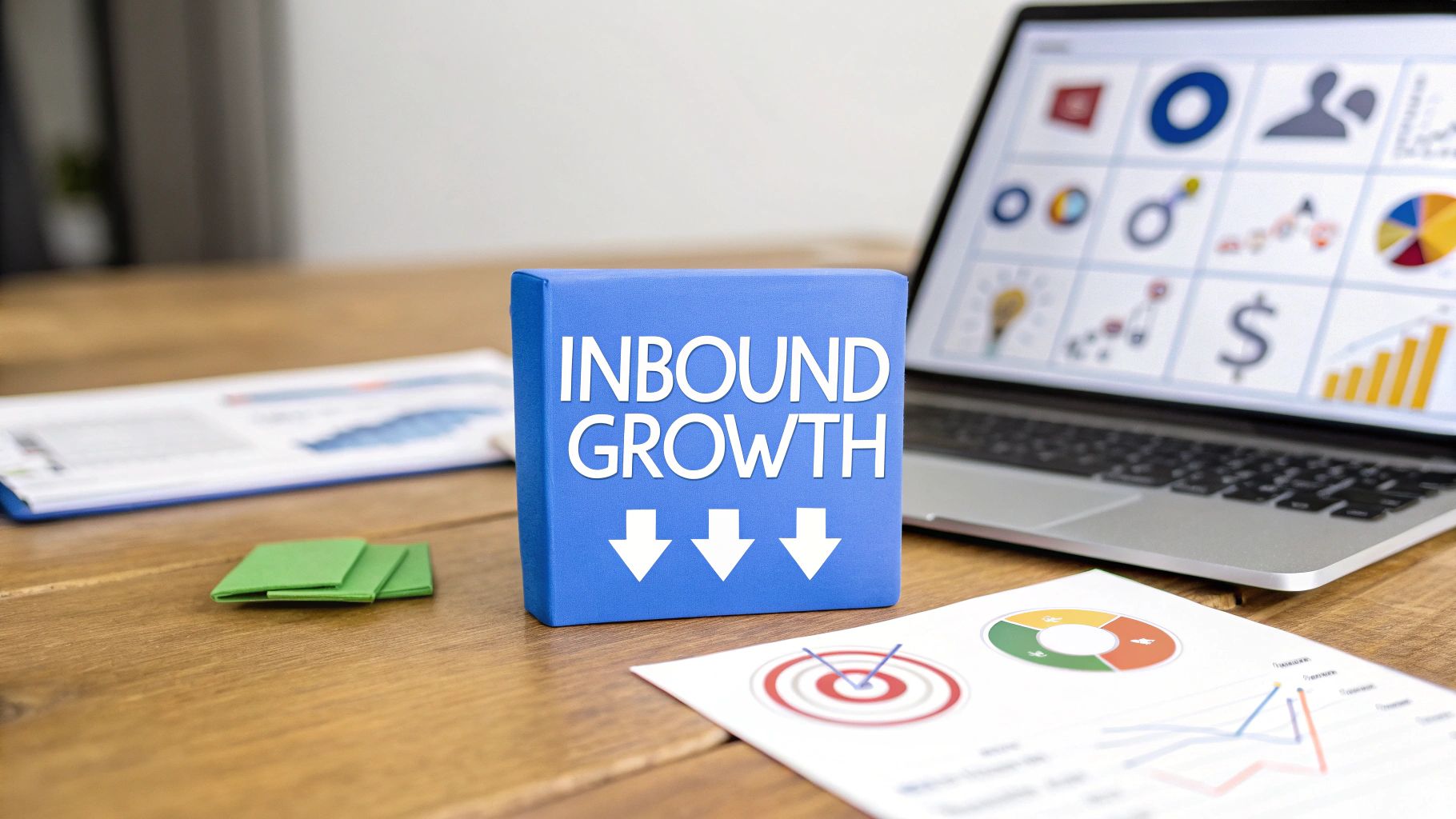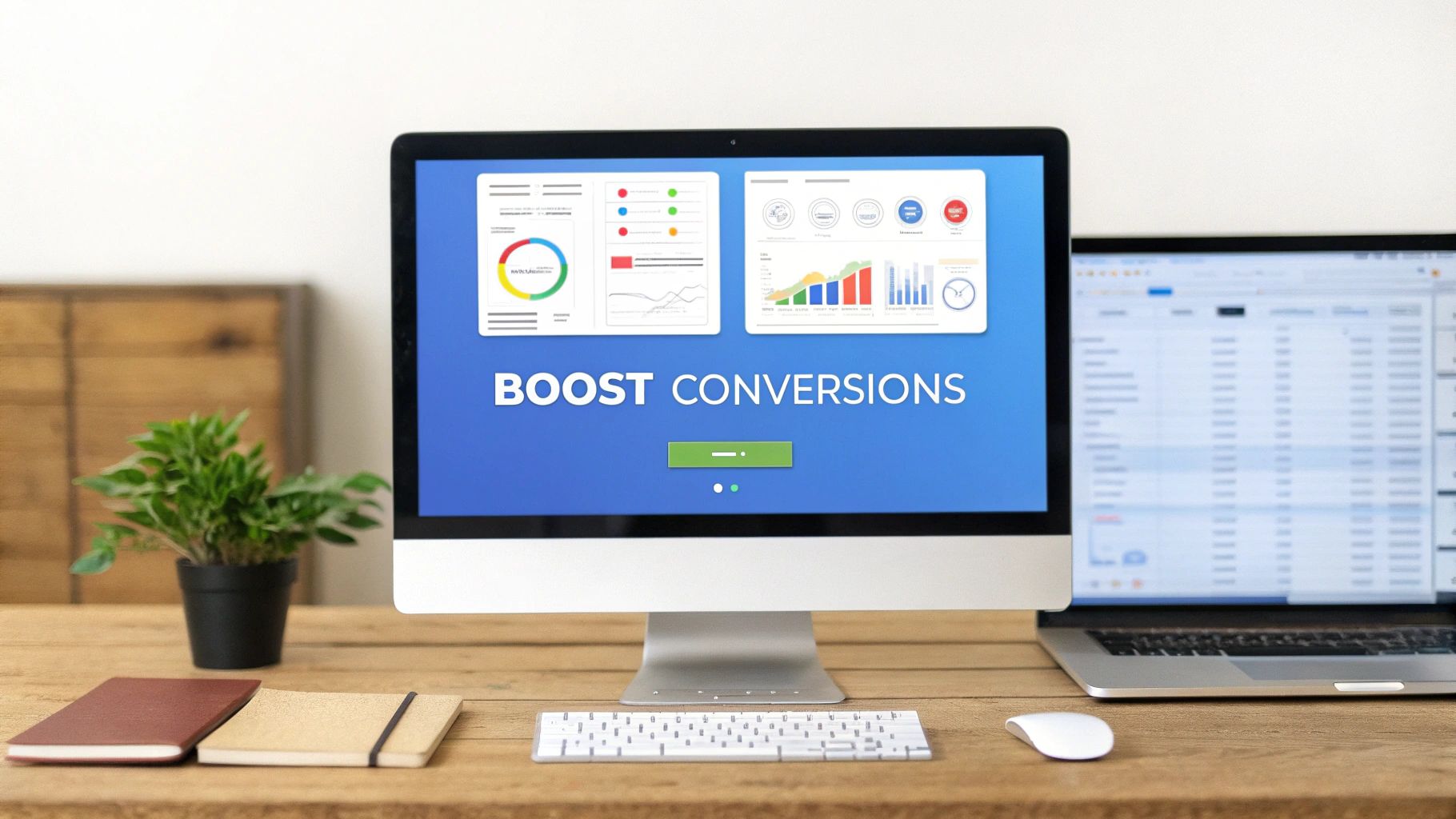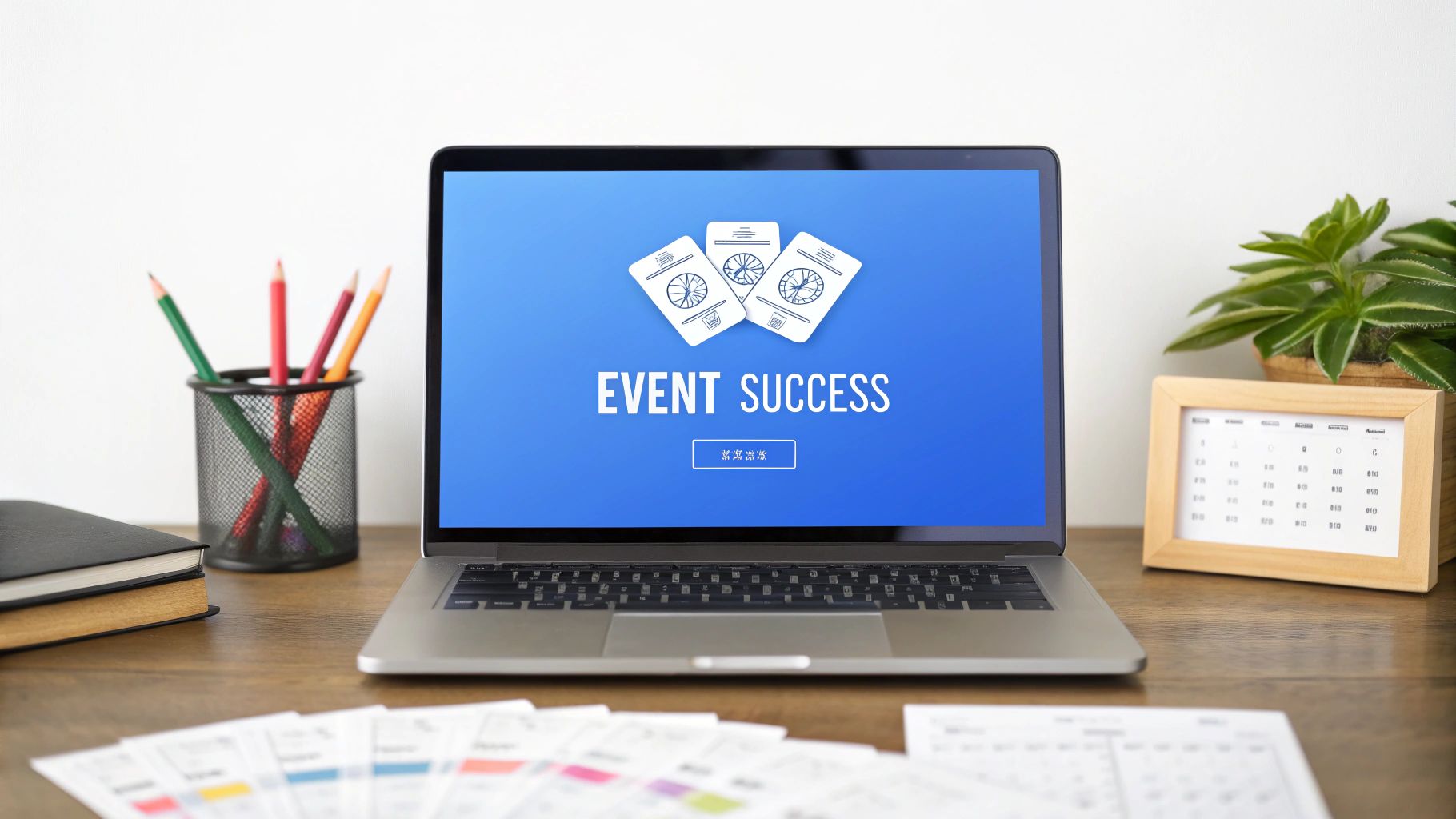Summary
Meta Description: Ready to boost your bottom line? Our guide offers proven strategies for improving customer lifetime value, from seamless onboarding to smart personalization.
Improving customer lifetime value is all about playing the long game. Instead of chasing one-time sales, your real goal should be building profitable, long-term relationships. It’s a strategic shift that focuses on increasing how much a customer spends over their entire time with your brand, turning them from a single-transaction buyer into a loyal fan.
The payoff? Sustainable revenue growth and a much more resilient business.
What Is Customer Lifetime Value and Why It Matters
Imagine your business is a garden. You could spend all your energy just planting new seeds (acquiring new customers). Or, you could also nurture the plants already in the ground, helping them grow stronger so they produce more fruit, year after year (increasing CLV). While you definitely need new seeds, taking care of what you've already grown is often way more profitable.
That's where Customer Lifetime Value (CLV) comes in. It's the total revenue you can reasonably expect from a single customer over your entire relationship. It’s a forecast that completely changes your perspective. Instead of just thinking about the value of one sale, you start seeing the massive long-term potential in every person who buys from you.
So, why is this shift in thinking so important?
- It's Way More Profitable: It costs less to keep a customer than to find a new one. On top of that, loyal customers tend to spend more over time, which directly boosts your profit margins without adding to your acquisition costs.
- You Make Smarter Marketing Decisions: When you know what a customer is actually worth, you can decide exactly how much you’re willing to spend to get them. Understanding CLV helps you get the best return on your marketing budget.
- It Naturally Improves Customer Retention: Focusing on CLV forces you to create better experiences. When your goal is a lasting relationship, you automatically invest more in what makes customers happy—great service, solid support, and loyalty perks.
The Power of the 80/20 Rule in CLV
The importance of CLV really clicks when you look at it through the lens of the Pareto Principle, better known as the 80/20 rule. The idea is simple: a small chunk of your effort often drives the majority of your results. For a business, this usually means a small group of your customers is responsible for most of your revenue.
Focusing on CLV helps you pinpoint that vital 20%—your most valuable customers. Once you know who they are, you can build targeted strategies to keep them coming back and attract more people just like them. This isn't just theory; it's a proven roadmap for growth.
The 80/20 rule suggests that roughly 80% of a company's revenue often comes from just 20% of its customers. Yet, according to Think with Google, only about a quarter of marketers worldwide use CLV as a key metric.
Ultimately, CLV is more than just another number on a dashboard. It’s a core business philosophy. It’s about building a sustainable, profitable company by investing in the people who truly matter—your existing customers. Measuring this, along with other key metrics, is the first step. For more on that, you might want to check out our guide on the most important KPIs for a website.
How to Accurately Calculate Your CLV
Figuring out your Customer Lifetime Value isn't as complicated as it sounds. Think of it more like putting a puzzle together. Once you have the right pieces in place (key metrics about how your customers behave), you get a crystal-clear picture of their long-term worth. Nailing this number is the first real step toward improving it.
There are two main ways to look at this: looking backward (historical) and looking forward (predictive). Each approach tells a different but equally important part of your customer's story.
The Two Core Models of CLV Calculation
First up, you have Historical CLV. This is the most straightforward method. It uses past data to tell you exactly what a customer has been worth to your business so far. You just add up the gross profit from all of their past purchases. Simple, right? But while it's accurate for what's already happened, it has a major blind spot: it ignores a customer's future potential.
That's where Predictive CLV comes in. This model is far more strategic. It takes historical data and customer behaviors to forecast how much revenue a customer is likely to bring in over time. It’s an incredibly powerful tool for making smarter decisions about where to put your marketing dollars and which retention efforts will pay off the most.
To get started with either model, you'll need a few key metrics. The infographic below breaks down the three most critical components that feed into your CLV calculations.
This visual shows how repeat purchase rate, average order value, and customer retention all work together to drive CLV.
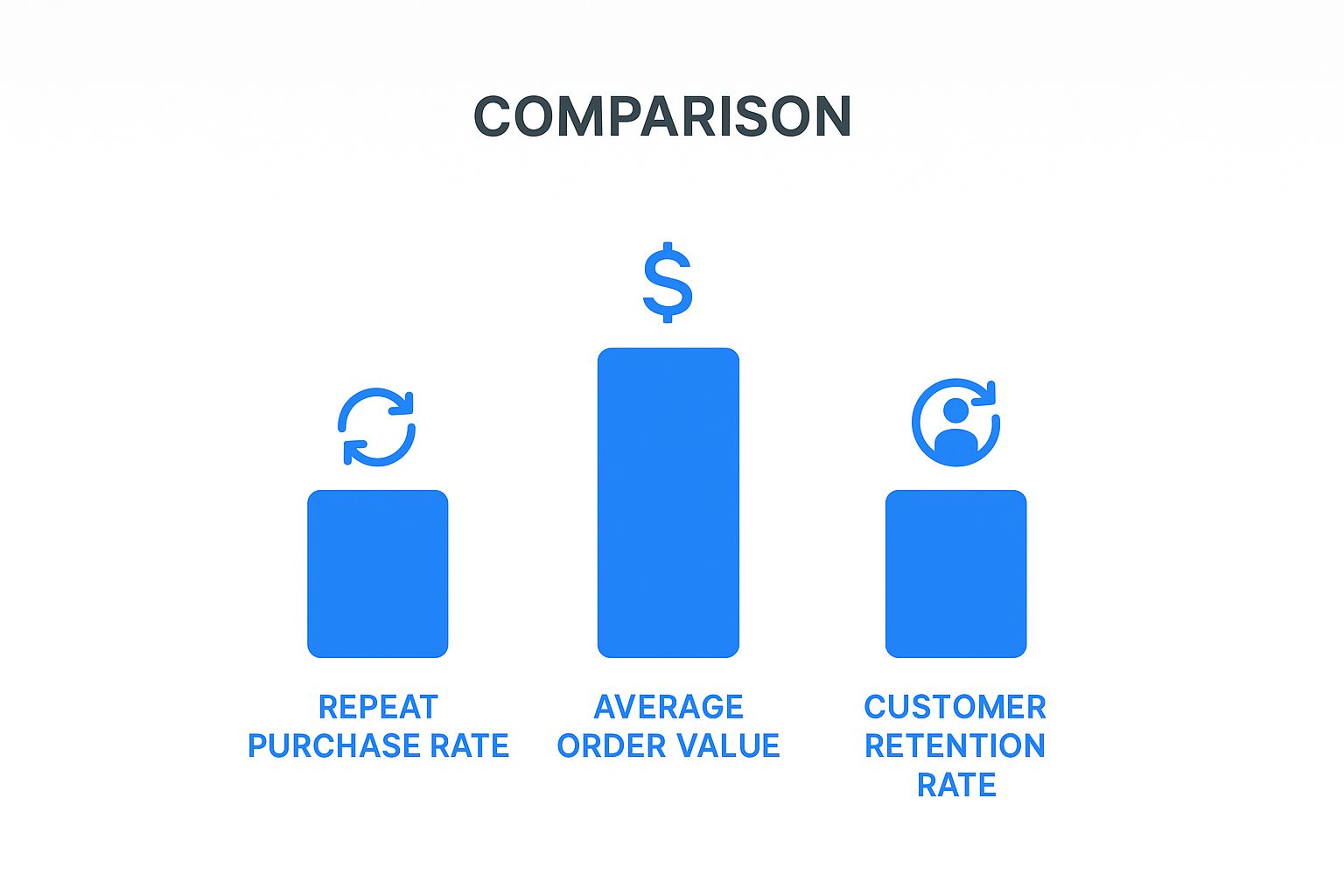
As you can see, each of these elements builds on the others to give you a complete view of a customer's value over their entire relationship with your brand.
A Simple Formula for Getting Started
If you're new to tracking this metric, the historical model is the perfect place to begin. It gives you a solid baseline and is super easy to calculate. To really understand the financial impact, it's essential to get a handle on the Customer Lifetime Value Formula and all the pieces that go into it.
Here’s a basic way to crunch the numbers:
CLV = (Average Purchase Value x Purchase Frequency) x Average Customer Lifespan
Let's quickly break that down:
- Average Purchase Value: This is the average amount a customer spends per order. Just divide your total revenue over a set period by the total number of orders.
- Purchase Frequency: This tells you how often a customer buys from you. Calculate it by dividing the total number of orders by the number of unique customers in that same period.
- Average Customer Lifespan: This is the average amount of time a customer sticks around before they stop buying. This one can be tricky, but even a conservative estimate is a great place to start.
For example, imagine a customer who spends an average of $50 per transaction and makes 20 purchases in their first year. Their historical CLV for that year is $1,000. But if predictive models suggest they'll stick around for five years, their potential value jumps to $5,000. This shows how a small 5% increase in retention can boost profits by anywhere from 25% to 95%, highlighting the massive power of long-term loyalty.
Comparing CLV Calculation Methods
Choosing between a historical or predictive model really depends on what you’re trying to achieve. One looks at the past with perfect clarity, while the other tries to map out the future.
Ultimately, both models offer valuable insights. Starting with the historical calculation gives you a concrete number to work with, while moving toward a predictive model empowers you to make proactive decisions that grow your business.
Proven Strategies for Increasing Customer Value
You've done the diagnostic work and calculated your CLV. Now it's time to actually improve it. Boosting customer lifetime value isn't about one silver bullet. It's about smart, proven strategies that forge stronger, more profitable relationships with your customers.
This is where the rubber meets the road. The following tactics are your playbook for turning theory into action. Each one is designed to make your customers feel seen, understood, and happy to stick around.

Create a Flawless Onboarding Experience
You only get one chance to make a first impression. A clunky, confusing, or boring onboarding process can kill a customer relationship before it even starts. In fact, a bad first experience is a leading cause of churn.
The whole point of onboarding is to get new customers to that "aha!" moment as fast as possible. That's the instant they truly get the value of your product or service and feel confident they made the right choice.
To nail this, focus on:
- Clear, Simple Instructions: Ditch the jargon. Give them easy, step-by-step guidance.
- Welcome Emails and Check-ins: Set up an automated email series that offers helpful tips and makes the customer feel supported.
- Proactive Support: Offer help before they even realize they need it. A well-placed tutorial video can make all the difference.
A seamless start builds instant trust and sets the stage for a long, valuable relationship.
Implement a Tiered Loyalty Program
Not all customers are the same, right? Your loyalty program shouldn't treat them that way, either. A tiered loyalty program is a fantastic way to boost CLV because it gives your best customers a clear reason to keep spending. By offering rewards that get better as they spend more, you give them a ladder to climb.
It's a win-win. Customers feel valued, and you get more repeat business.
A great loyalty program isn't just about rewarding transactions; it's about building an emotional connection. It transforms a simple buyer-seller dynamic into a community where people feel recognized.
Think of a simple Bronze, Silver, and Gold structure. Bronze members might get basic points for purchases. Gold members could get exclusive early access to new products, free shipping, and even a dedicated support line. This setup naturally encourages people to increase their spending to unlock better perks.
Provide Proactive and Exceptional Customer Support
Reactive support cleans up messes. Proactive support stops them from happening in the first place. This shift in mindset is huge for keeping customers around and increasing their lifetime value. When people feel like you're looking out for them, their trust in your brand goes through the roof.
Exceptional service is a massive competitive advantage. It's that simple.
Here are a few ways to get proactive:
- Monitor Customer Behavior: Look for signs of trouble, like someone repeatedly failing an action in your software.
- Offer Timely Help: When you spot those signals, reach out with a helpful message. Don't wait for them to ask.
- Create a Knowledge Base: Empower customers to help themselves with a solid library of FAQs, tutorials, and how-to guides.
Upsell and Cross-Sell with Relevance
Getting customers to spend a bit more each time they buy is a direct line to a higher CLV. Upselling encourages them to buy a more premium version of a product, while cross-selling suggests related items. The secret to making this work is relevance.
Your recommendations need to feel like genuinely helpful suggestions, not a pushy sales pitch. Use data like past purchases and browsing history to offer products that actually make their experience better. For example, if someone buys a camera, a relevant cross-sell is a memory card. It just makes sense.
This approach doesn't just boost short-term revenue; it pulls customers deeper into your brand's world. By showing them more of what you offer, you make future purchases more likely. If you want to go deeper, we have a complete guide on increasing average order value packed with more advanced techniques.
Using Personalization to Boost CLV
Let's be honest: generic, one-size-fits-all marketing just doesn't cut it anymore. If you want to improve your customer lifetime value, you have to make every customer feel like your only customer. This is where deep personalization comes in, and it goes way beyond just a first name in an email.
True personalization means using customer data—their purchase history, browsing habits, and preferences—to build experiences that feel made just for them. When your customers feel understood, they don't just buy more often; they become your biggest fans.
This link between feeling seen and spending more is incredibly powerful. Research has shown that a staggering 82.5% of customers are more likely to buy again from a brand that "gets them." This hits all the key drivers of a high CLV: better conversion rates, higher average order value, and more repeat business.
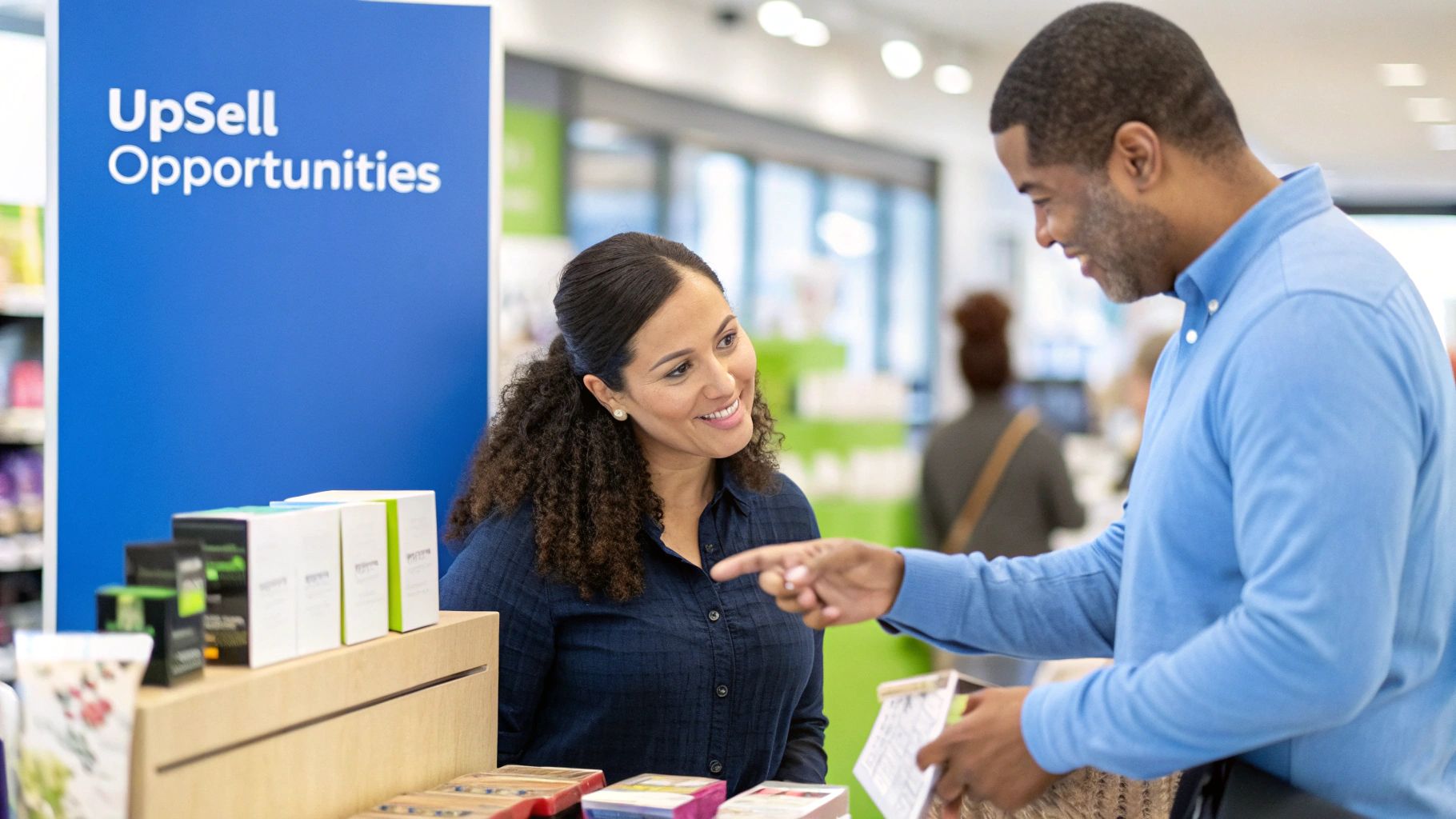
Leverage First-Party Data for Tailored Experiences
Your starting point for any great personalization strategy is high-quality, first-party data. This is all the information you collect directly from your audience, and it's pure gold for understanding what your customers actually want.
By digging into this data, you can stop making broad assumptions and start getting down to precise, individual-level insights. This is how you build experiences that truly resonate, making your marketing feel less like an ad and more like a helpful tip from a friend.
Build Dynamic and Personalized Landing Pages
Picture this: someone clicks on your ad. Do they land on a generic, catch-all page, or one that speaks directly to what they were searching for? That’s the magic of dynamic landing pages.
These pages intelligently change their content—headlines, images, and offers—based on the user's search query, location, or past interactions with your brand.
This immediate relevance is a game-changer for engagement. The visitor instantly sees you have exactly what they need. Instead of a generic welcome mat, they get a custom-tailored experience. To see just how effective this is, check out these powerful personalized landing page examples that show this strategy in action.
Personalization is more than a marketing tactic; it's a retention strategy. It shows customers you're paying attention not just to what they buy, but to who they are. This recognition is the bedrock of long-term loyalty and a higher CLV.
Craft Exclusive Offers for Loyal Segments
Your best customers shouldn't get the same generic offers as a first-time visitor. By segmenting your audience based on their CLV, you can create exclusive perks that reward their commitment.
Think about offering things like:
- Early Access: Let top customers be the first to know about new products or sales.
- Personalized Discounts: Send a special discount for a product category they browse often.
- VIP-Only Content: Create exclusive guides or tutorials that make them feel like insiders.
To really nail this, it's worth exploring some advanced customer segmentation strategies. These techniques help you group your audience in meaningful ways, so you can deliver the right message to the right person, every time.
Using personalization to boost CLV is all about showing your customers you value them. By using data to create more relevant and engaging experiences, you build stronger relationships. And stronger relationships lead to a customer base that will stick with you for the long haul.
Real-World Examples of CLV Mastery
Theory is one thing, but how do the pros handle customer lifetime value in the real world? Let's pull back the curtain on how giants like Sephora and Starbucks turn a first-time buyer into a lifelong advocate. They build relationships that are about so much more than the initial sale.
These companies aren't just pushing products; they're building ecosystems designed to make loyalty easy and rewarding. Their strategies are surprisingly simple and can be adapted for just about any business.
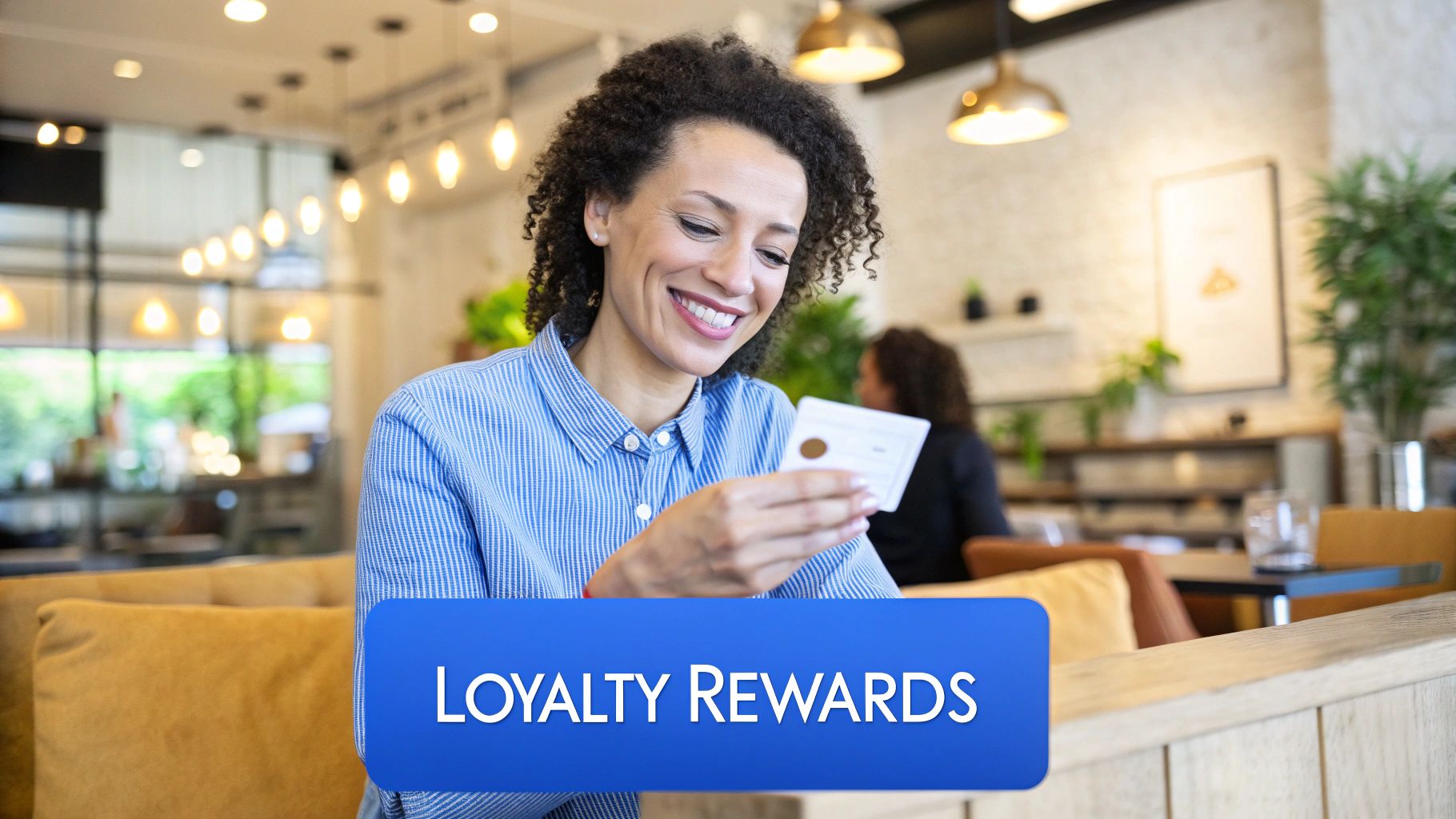
Sephora’s Beauty Insider Loyalty Program
Sephora's Beauty Insider program is a textbook example of a tiered loyalty system done right. It’s not just about earning points—it’s about belonging to an exclusive club. The concept is straightforward: the more you spend, the more you get.
This tiered approach is a genius way to boost CLV. It gamifies the shopping experience and nudges customers to spend just a little bit more.
Here’s what makes it so effective:
- Aspirational Tiers: The program is split into three levels: Insider, VIB, and Rouge. Each tier unlocks better rewards, like exclusive access to new products and bigger discounts. It creates a powerful incentive to keep climbing.
- Personalized Rewards: Sephora uses your purchase history to offer personalized recommendations and birthday gifts you’ll actually want. It’s a small touch that shows they’re paying attention.
- Community Building: The program also grants access to a members-only online community. This shifts the dynamic from a simple transaction to a genuine relationship.
Starbucks Rewards and Mobile App Integration
Starbucks has transformed the daily coffee run into a frictionless, data-rich experience. Their Rewards program, seamlessly woven into their mobile app, is a powerhouse for driving both purchase frequency and average ticket size.
At its core, the strategy is about making it incredibly easy to participate. Customers earn "Stars" for every purchase, which can be redeemed for free drinks. It's a simple feedback loop that encourages repeat business.
The most effective CLV strategies don't just reward transactions; they remove friction. By making it easier to buy, you naturally encourage customers to come back again and again.
But it goes deeper. The app is a data goldmine, giving Starbucks insights into what you like. This allows them to push out personalized offers and suggest new items. And the "Order Ahead" feature? Pure genius. It eliminates the biggest hassle—waiting in line—and builds a sticky habit.
The Power of Proven CLV Strategies
Looking at case studies from leaders like Sephora and Starbucks shows just how powerful a CLV-focused approach can be. Sephora’s Beauty Insider program, with over 25 million members, has successfully increased how often its best customers spend. Starbucks overhauled its rewards program using CLV data, and it now drives over 50% of the company's U.S. revenue.
These examples reinforce a well-known truth: 76% of a company’s annual revenue tends to come from existing customers. You can dig into more examples of how industry leaders maximize customer value on maccelerator.la.
Your Top CLV Questions, Answered
As you start putting CLV to work, you're bound to have a few questions. That’s perfectly normal. Here are quick, straightforward answers to the most common ones we hear.
What Is a Good Customer Lifetime Value?
This is the million-dollar question, but the honest answer is: it depends on your business. A great CLV for a high-ticket SaaS company will look completely different from a solid CLV for an e-commerce shop.
Instead of a universal number, it's more useful to look at the ratio between your CLV and your Customer Acquisition Cost (CAC).
A healthy target is a CLV to CAC ratio of 3:1. This means for every dollar you spend bringing in a new customer, you're getting three dollars back over their lifetime. If your ratio is lower, you might be overspending on ads. If it's much higher, you could be missing out on growth.
How Often Should I Calculate CLV?
How often should you check in on this metric? The right timing hinges on how fast your market is changing. For most businesses, running the numbers quarterly is a great place to start. It’s frequent enough to spot trends without getting lost in the data.
But you might want to adjust that schedule:
- Monthly: If you're in a fast-paced world like e-commerce or subscriptions, a monthly check-in keeps you agile.
- Annually: For businesses with long sales cycles, a yearly calculation might be all you need for your long-term strategy.
The most important thing is to be consistent. When calculated regularly, CLV becomes a living metric for your company’s health.
What Are the Best Tools for Tracking This Metric?
Good news: you don't need a massive, expensive tech stack to get a handle on CLV. The best tools are often the ones you’re already using.
Many businesses start with a simple spreadsheet. Just export your sales data, and you have everything you need for a solid historical CLV calculation.
As you grow, you'll probably want something more sophisticated. That’s when you can look into tools like:
- CRM Platforms: Systems like HubSpot or Salesforce pull all your customer data into one place, making it easier to track and segment.
- Analytics Software: Google Analytics is a powerhouse for understanding customer behavior and lifespan.
- Specialized CLV Tools: There are also platforms built specifically for customer data analysis that offer advanced predictive modeling.
The key is to start with what you have. Master the basics, then level up your toolkit as your needs grow.
The goal isn't just to find a number; it's to understand the story behind it. The right tool is the one that helps you see that story most clearly, empowering you to make smarter decisions.
Can Small Businesses Benefit from Focusing on CLV?
Absolutely. In fact, you could argue that CLV is even more important for small businesses.
When you're working with a tighter budget, every customer relationship is precious. Small businesses simply can't afford to get stuck on the hamster wheel of constantly chasing new, expensive customers.
Focusing on CLV is how a small business builds a sustainable foundation for growth. By doubling down on keeping the customers you already have, you create a stable stream of revenue from people who already trust you. Even better, these happy customers become your best marketers, driving powerful word-of-mouth that money can't buy.
Ready to turn clicks into conversions with landing pages that feel personal to every visitor? LanderMagic gives you the power to create dynamic, high-converting pages that adapt to your audience. Start optimizing your post-click experience with LanderMagic today!




